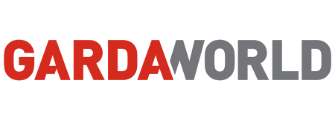
Roundtable: Crime prevention through customer service
By Andrew Snook
Features crime prevention through customer service crime prevention through environmental design editors pick GardaWorld security guard
Sponsored by GardaWorld
 Image: anyaberkut / iStock / Getty Images Plus
Image: anyaberkut / iStock / Getty Images Plus On Sept. 15, Canadian Security hosted a virtual roundtable, “Crime prevention through customer service,” moderated by editor Neil Sutton and sponsored by GardaWorld.
Industry experts provided insights on why great customer service is more important than ever, with society gradually returning to a new normal as we look towards a post-pandemic world.
The roundtable focused on GardaWorld’s Crime Prevention Through Customer Service (CPTCS) program, which combines the elements of customer service excellence with the best practices of Enterprise Security Risk Management (ESRM).
The panel consisted of Jason Sangster, director of terminal operations, security and safety, Edmonton International Airport; Sean Sportun, national director of strategic accounts, GardaWorld; Marc-André Plaisance, director of loss prevention, GardaWorld; and Scott Young, vice-president, Prairie Region, GardaWorld.
What is CPTCS?
Young kicked off the roundtable by discussing customer service as it relates to the security industry.
“Very often in the security guard industry, we hear our clients talking about the need for customer service, and customer service in their security guard team, and the importance of customer service in their client’s environment — whether that’s health care or government, special events, airports or property management,” said Young.
“For us in the security guard industry, our client is technically the property manager or the airport authority. So, when we talk about customer service, it could be the customer service as a guard service provider to our clients. However, most of the time we’re looking at customer service within the security guard team. That customer service we offer to our customer’s customer.”
So, how does GardaWorld add value down the chain to its customer’s customers? This is where CPTCS comes into play.
“There are a few different ways we do that. Often times, when we’re speaking with customers, they talk about the need for security but also talk about the need for customer service. So, we’ve combined those through a program we call Crime Prevention Through Customer Service (CPTCS),” Young said. “Very similar to Crime Prevention Through Environmental Design (CPTED), we utilize a very progressive, very engaged service program to actually reduce crime.”
When initializing this program with a client, GardaWorld begins with an organizational assessment.
“Every organization is different. Every client environment is different. So, we need to analyze our client’s sites, customers, crime trends, service goals, and their security strategy,” Young said. “From there, we build a training program. That includes our Disney Customer Service Program, self-awareness training, service opportunities, situational awareness and mental health awareness.”
GardaWorld tracks and measures customer interactions through its reporting structure and data analysis, then rewards positive behaviour when employees are going above and beyond offering excellent customer service.
The role of customer service
The panel was asked what they believe the role of customer service is today in the professional security market, and how it can improve performance and results.
“When we talk about having customer service as part of the crime prevention program, it’s essential. It’s a foundation of what our guards and our employees should be doing at every single level,” Sportun said. “Building it into your program, having our guards go through it, is very important and key to a very productive customer experience on the client end.”
Having trained security personnel that can offer strong customer service is especially vital in places like international airports. Edmonton International Airport’s Sangster said about 90 per cent of incidents and issues at the airport can be related to customer service. This can include dealing with customer disputes at check-in counters, alcohol-related issues, situations involving airport employees, and mental illness issues at the airport, all while meeting its regulatory and corporate compliance.
“Our airport security guards are front stage and centre when it comes to dealing with passengers, the public, our airport employees. Having that high standard of customer service and awareness in our security training and various programs help those folks deal with the various incidents they get involved in,” Sangster said. “That enhanced training allows them to work with those people, whatever those issues are.”
Plaisance says the role of security presence in a retail environment is key.
“When a customer enters a store and is greeted by a security guard, that customer will immediately feel a presence acknowledging them. So, for a regular customer, it will be a sign of great customer service. It will elevate the experience that they will get in that store,” he said.
“And if the goal was to commit a robbery or a theft, the customer will most likely decide to go somewhere else where there will be less presence. [That] will have an immediate impact on a store’s shrink at the end of the year, reducing criminal activity in that store compared to one with no security presence.”
Evolution of the role
The panel commented on how the role of security guards has evolved in recent years as it pertains to crime prevention programs and customer service programs. Sportun said the role of the security guard is moving from one that is closely related to enforcement to more of a customer service role.
“For the average customer coming into the store, or client coming onto a property, you’re going to see a professional security officer and you’re going to have a professional encounter or engagement with that individual because of that customer service aspect,” he said. “But if there is an enforcement component that is needed, then the security officer is going to be able to transition into that, but also keeping in mind the customer service aspect — deescalating through verbal means rather than going hands on. I think that, in my view, is a huge difference in what we used to see to what we do now.”
Impact of COVID-19
At the Edmonton International Airport, not unlike other airports that have been financially impacted by the global pandemic, management had to become very strategic in how they utilized resources, including security personnel.
“From a security perspective, they ended up taking over access to our central pre-board screening checkpoint. We had a concierge there before doing that piece, working with the passengers, but security took it over. We had to be strategic, save on costs. At airports, if you don’t have anybody flying through, there’s no money being made,” Sangster said.
In addition to adding the concierge role to security personnel, they had to perform more strategic patrols of the airport with less assistance.
“Pre-pandemic, we were looking at 10,000 people departing and 10,000 arriving a day, plus all the guests. You had all these eyes out there, which are really security partners for you,” Sangster said.
Now that traffic at the airport is starting to increase, the customer side of the role of security professionals is even more important for things like ensuring face masks are worn by anyone entering the airport.
“The customer service side is important, so we don’t have incidents inside the terminal. We want people to fly. We’re seeing some increases right now and we want that to continue,” Sangster said.
Throughout the pandemic, Sportun says guards have been enforcing policies and regulations they never did in the past, so education, training and customer service are vital.
“If the guard is able to articulate in a way that the customer and the client is going to understand, then you’re going to have a reduction in conflict. You’re going to have a reduction in some sort of dispute,” he said.
“Mind you, there is going to be that small population that is going to be out there just looking for trouble, and no matter what that encounter is, they’re coming with an ‘anti-vax’ tone to them. But again, that guard is going to be able to de-escalate that. They’re going to be able to understand what they’re about to get into and what this individual’s intent is, and know how to react.”
Technology implications
Sportun said there are always new types of technology coming that can assist security personnel with a wide variety of their duties, such as security cameras for heat-mapping or detecting elevated body temperature, to support staff during the COVID-19 pandemic.
“I think it’s great. But tying it back into customer service, no matter what technology you push out there, it’s how do you explain it to your end users, from a customer-client perspective … when you identify something. How do you approach that? That’s all going to be customer service driven. It’s going to be that messaging,” he said.
Ask the experts
In the audience Q&A portion of the panel discussion, one attendee asked, “How do you conduct quality control on your customer service program with your employees?”
Young said you can’t manage what you don’t measure.
“I think it comes down to surveys. Such as in an office tower, you need tenant satisfaction surveys. What is the satisfaction? What is the awareness? How engaged do they find the security team before and after you implement a customer service training program? Are they more aware of the security team in a more positive way six months after the training has happened?
“I think tenant surveys are a good way to gauge the customer service appreciation of the security team but also of the overall experience of being a visitor, a guest, a passenger or a patient in a hospital,” he said.
Print this page
Advertisement
- OPINION: Canadian brands need a new cyber security approach to meet evolving consumer needs
- Women’s Executive Network presents 2021 top 100 award winners
Leave a Reply